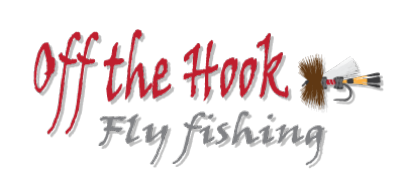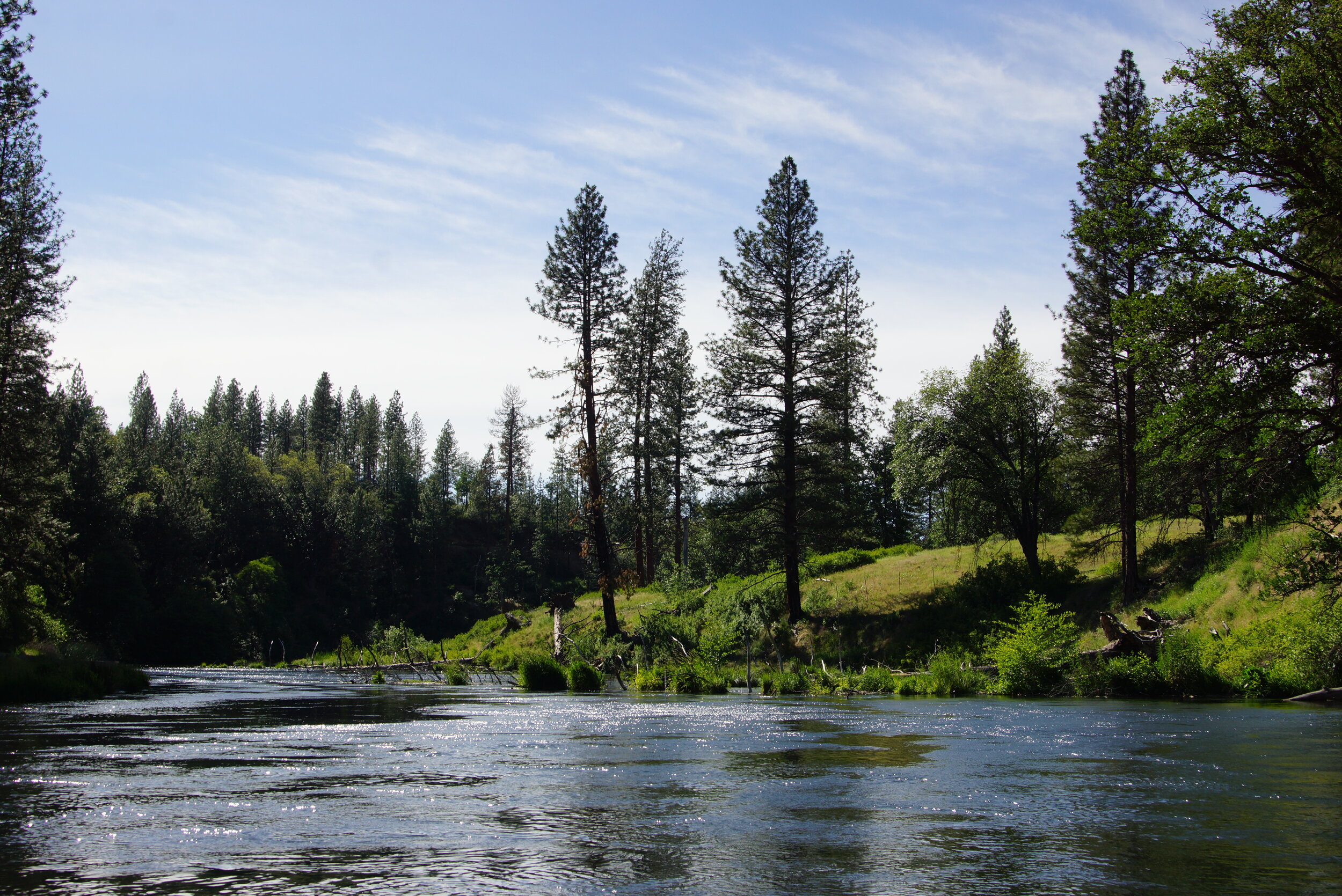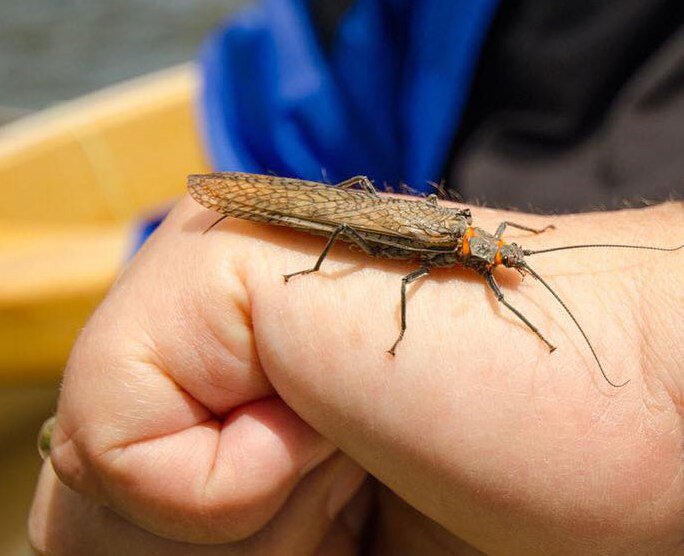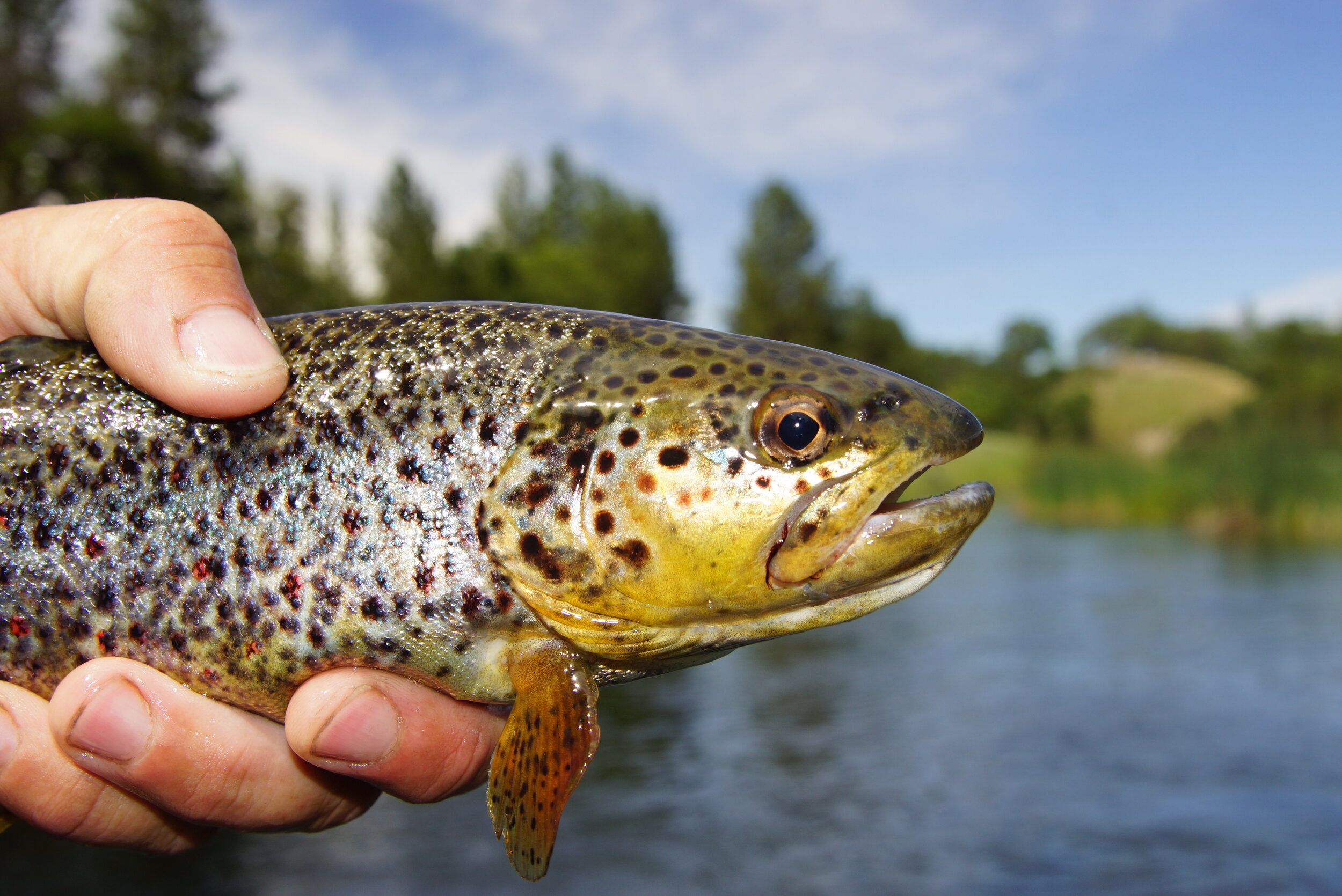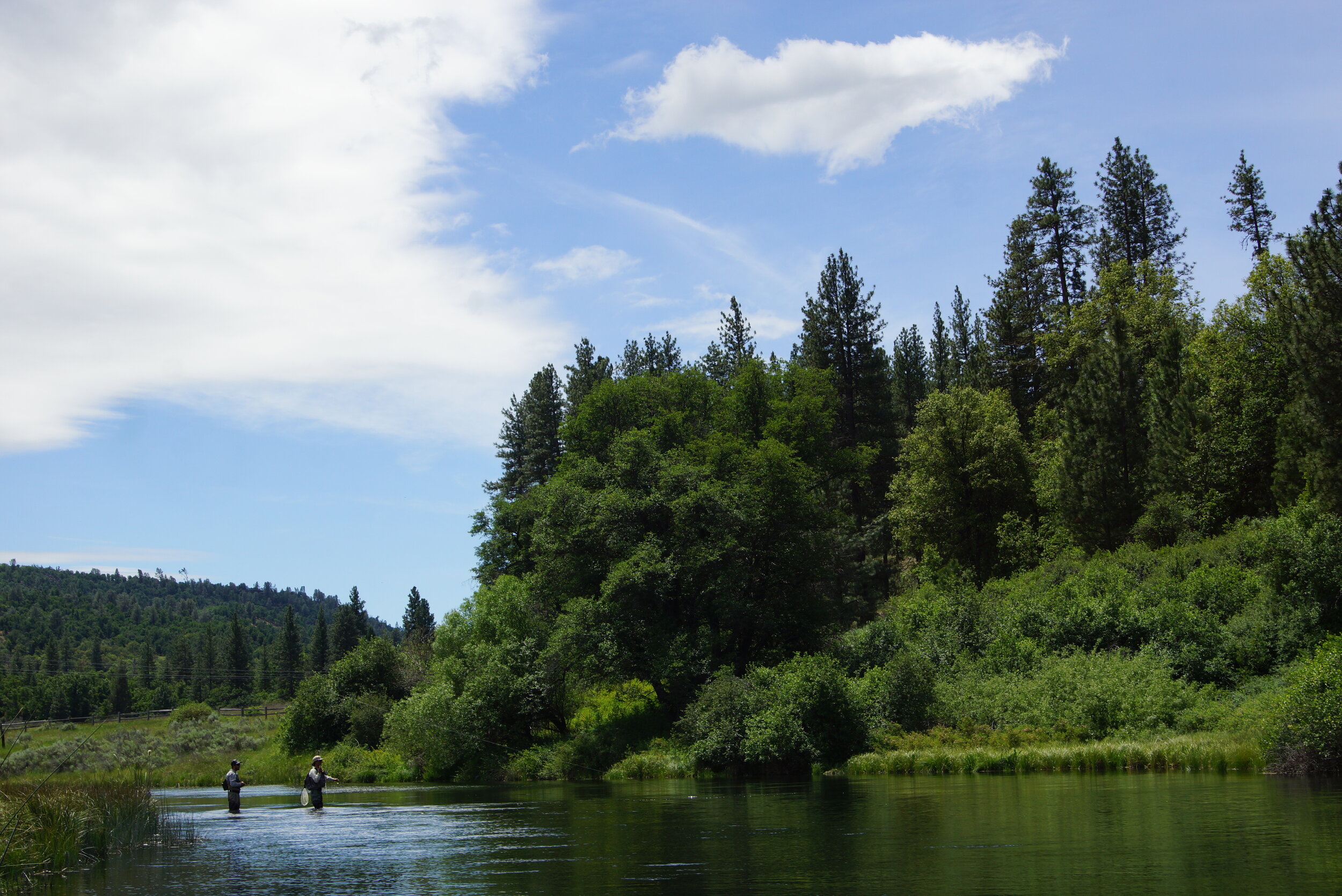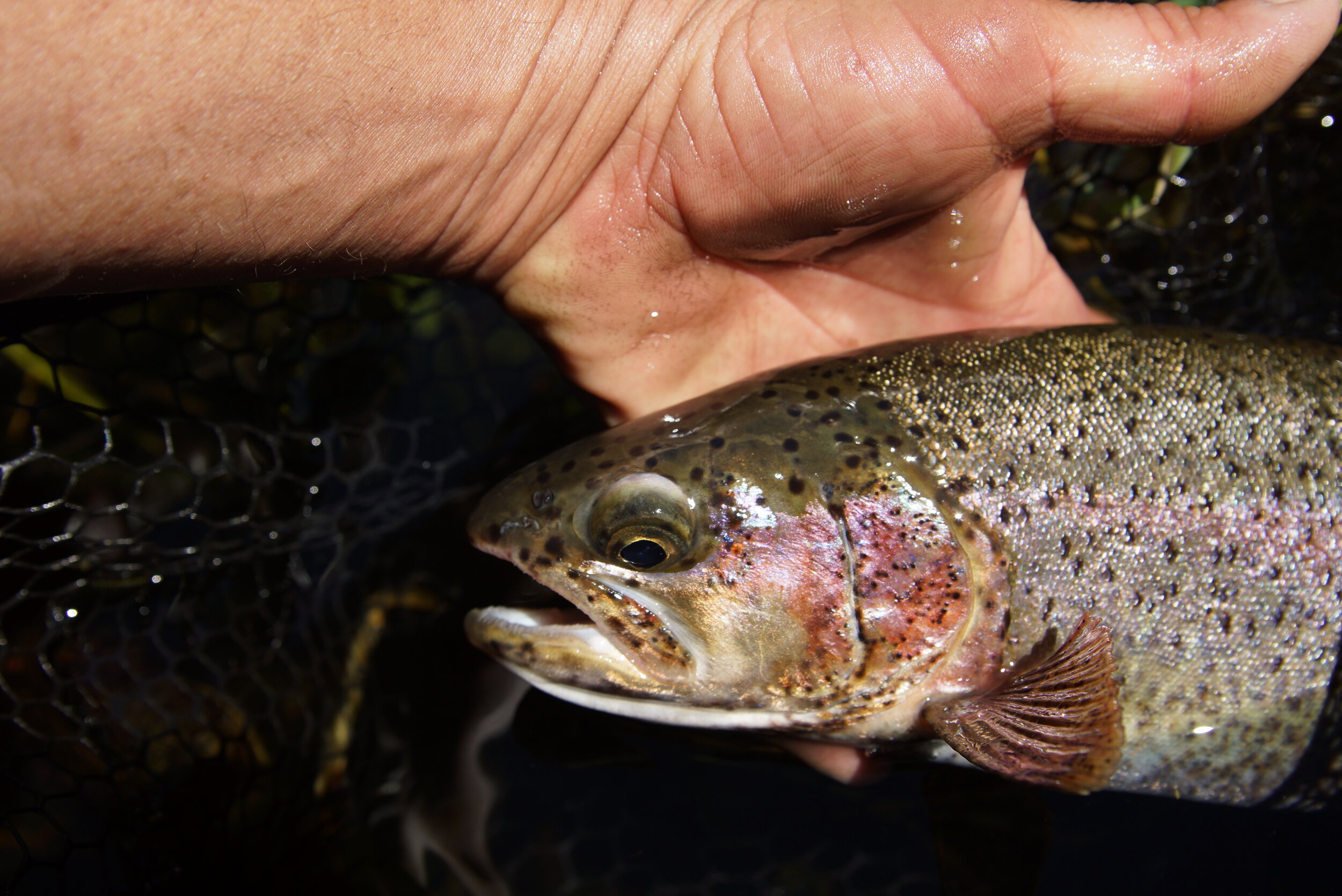Guided Fly Fishing Trips on Hat Creek in Northern California.
Hat Creek is one of the largest and most storied spring creeks in California.
Hat Creek bubbles from cold glacier fed aquifers on the North side of Mt Lassen here in Northern California. It flows clean and clear and it’s shallow riffles and weedy bottom are ideal habitat for a myriad of insects including Stoneflies, caddis and several mayfly species. However it the rainbows and browns that call it home which bring anglers from around the country. Hat Creek provides challenging and rewarding fly fishing opportunities for those up to the task on virtually any given day of the year.
It is comprised of two distinct sections that offer something for just about every type of trout angler. The upper section begins in Lassen National Park and flows North towards Cassel Campground and Baum Lake. This portion is mostly private water however there are a number of access points and campgrounds along the way with stocked trout for families looking to camp and fish.
The lower portion between Hat #2 power house and Lake Britton is the most intriguing section for fly fishing. Just below the famous Power House Riffle Hat creek meanders through a beautiful meadow down past highway 299 to the lake. This area has glassy slick water flowing over weed beds and is ideally suited to dry fly fishing.
Keep reading to learn more or Call (707) 287-2939 for up to date fishing reports, current river conditions and information on experiencing enjoyable and memorable fly fishing for yourself. Dates fill up quickly for many of our offerings so don't delay. You may also fill out our Online Trip Request Form.
Reservations and Rates
Cost of a full day Hat Creek guided trip is:
$625 per day (1 to 2 anglers per guide with rods, reels, flies, and lunch provided)
SEASONS ON HAT CREEK
Hat Creek is now open year round for catch and release. Due to it being a spring creek, it is virtually unaffected by spring runoff and flows clear and cold virtually every day of the year.
Early Season
May and June: are generally considered "prime time" on Hat Creek. Beginning as early as Opening Day (the last Saturday in April), a myriad of insects begin to hatch on this spring creek, providing consistent opportunities throughout each day to catch fish on both nymphs and dry flies. There can be so many different hatches coming off at the same time on Hat Creek during this time of year, it can be difficult to determine which bugs the fish are eating. The most important hatches are generally the larger insects, such as the salmonflies in May and Green Drakes in June, however the Hat Creek trout will fill also feed on little yellow stoneflies, Pale Morning Duns, and caddis when larger insects are unavailable to them. Hat Creek offers excellent dry fly fishing opportunities however when the fish aren't readily taking dries, they can generally be taken dead-drifting nymphs under indicators in the faster moving riffled water. Due to the prolific insect hatches in the spring and early summer, and Hat Creek’s storied history, many of the commonly known accesses points on Hat Creek – such as the famous Powerhouse #2 riffle – can be quite crowded at times. Fortunately, there are plenty of fish to be caught however for those wanting to get away from the crowds we have access to other less popular yet productive areas as well.
SUMMER
July and August: are sometimes considered to be the “dog days of summer” on Hat Creek, but there is still some great fly fishing to be had this time of year. Tiny Trico mayflies hatch consistently nearly every morning, and caddisflies emerge like clockwork in the riffles at dusk. Anglers targeting Hat Creek in the midsummer months generally fish early and late in the day. Admittedly, midday fishing can be slow, making midday siestas a nice relaxing change of pace, although die-hard anglers will often head to the nearby Pit River to high-stick its oxygenated pocket waters before heading back to Hat Creek for the evening rise. Combining Hat Creek dry fly fishing with Pit River nymphing can make for a great day of summer fishing, and likely without seeing another soul on either stream.
FALL
September, October, & November: The Fall Season on Hat Creek is a favorite time of year on the creek for locals. Other North State Rivers get most of the attention and angling traffic, so it's not uncommon to have Hat Creek entirely to yourself to enjoy the morning Trico Hatches. Caddisflies are common during the evening rise, as are a few of the giant October Caddis to get the bigger fish in the creek excited. Dry fly opportunities abound, while dead-drifting nymphs – or even suspending dropper nymphs below big attractor dry flies – can also be quite productive. On overcast days, there can be some phenomenal blue-winged olive hatches. These tiny mayflies respond to changes in barometric pressure, and hatch whenever a storm front moves through the area, stimulating some great midday dry fly action on all of our regional streams, including Hat Creek. For a real challenge, try to trick the finicky trout that live in Hat Creek's most demanding section of technical water: the clear, smooth micro-currents of Carbon Flats.
WINTER
Hat Creek closes for fishing on the 15th of November and opens again the following April.
FISHING AT HAT CREEK
Hat Creek opens to fishing on the last Saturday in April and remains open through November 15. The section on Hat Creek from Powerhouse #2 down to Lake Britton provides an array of quintessential fly fishing water; it is where the serious fly fishermen spend their time. This section of river is 3.2 miles long, all of which is designated as Wild Trout water with Trophy Trout restrictions.
Hat Creek is open to fly fishing year round!
